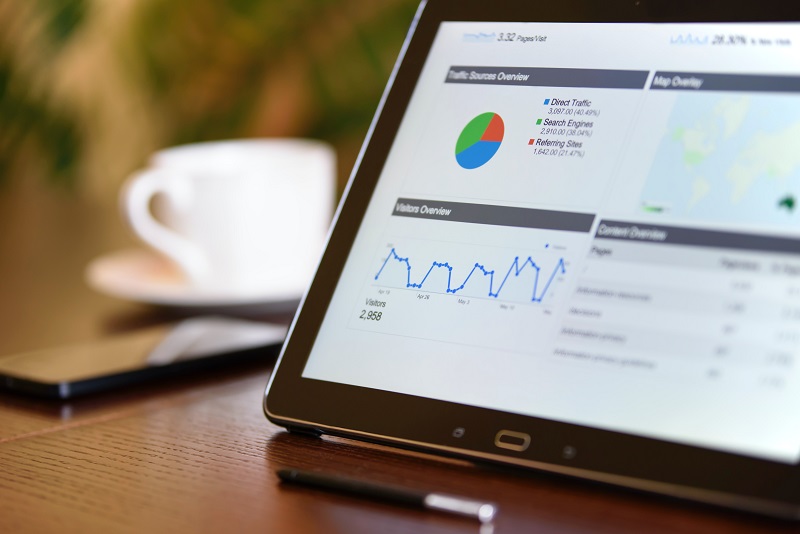
Predictive Analytics Use Cases In The Retail Industry
In an expanded and commercial industry space new and innovative opportunities are presented to retail organizations from several novel sources of data, log files, and from transaction information to sensor data to achieve unmatched value and combative advantage in their respective fields.
In order to attain customer satisfaction and to flourish their business, people across the organization must be empowered, so that swift and accurate decisions can be attained. The only means by which this could be achieved is to control and manage huge data and behavior in retail analytics to attract and satisfy customers and to reveal better and new opportunities as well as trends.
Behavior Analytics
To understand the essentials and desires of the customers are necessary to overcome the issues of customer conversion rate, personalized campaigns to maximize revenue. These days there are several communication modes for customers to get in touch with companies such as through online platforms like social media and e-commerce sites, through mobile applications as well as through shops directly. This naturally increases the data types that are supposed to be analyzed and interpreted.
A proper and detailed analysis of these collected data can be used to have an understanding of the nature of customers along with the identification of high-value customers. This also enables companies to analyze the basis of a customer purchase which would, in turn, help them to urge their customers further to develop an affinity towards their product. Thus companies can target customer loyalty and satisfaction. For this, data engineering is the quintessential fact which ensures these.
Personalizing In-store Experience with Big Data
Earlier merchandising was considered a unique form of art. There wasn’t any parameter to identify the base of merchandising decision-making. With the advent and growth of online sales, the purchase habit of customers had changed a lot. They perform thorough research over the internet on products before making a purchase or keep their purchase for some other time.
With proper data engineering, companies will be able to point out customer behavior and make sense of the data acquired. Customer tracking technologies also add to new means of access to customer behavior at shops. Through personalizing in-store experience with loyalty apps and by providing offers uniquely to customers based on the value of customers can improve their loyalty to the computers and satisfaction on purchase.
The insights into customer preferences can be understood through various means such as in-store sensors, supply chains, websites, mobile applications, cameras, and so on.
On the basis of data engineering programs, retailers can be benefited in a lot of ways. They can both test and measure the marketing and merchandising methods on the behavioral patterns of the customer for better sales. Apart from this the customer browsing history and purchase information can be made use of in order to gain knowledge of customer necessities and interests.
Customer Journey Analytics
The customer journey analytics can be considered as the interconnected relationships between every touchpoint that the customer interacts with across various channels in due course. It duly makes customer care, marketing professionals, and customer analytics to ensure to analyze and measure customer channel journey across time which would enable to assure improved customer experience.
As the real-time analysis of millions of data becomes possible it would be able to point out the root causes of mismatch with the customer desires and necessities and thereby unveil customer behavior which could be either beneficial or unsuitable for the customer. However, the positive analysis of these data could possibly create a better customer experience.
Individual touchpoints are focused on by companies for the betterment of customer experience. Along with this, the appropriate identification of customer journeys across channels and time creates the best results of customer experience. The monitoring of touchpoints in nowhere is not the key to enhanced customer experience rather attain this unique experience customer analytics must evolve, from retrospective reporting to real-time, behavior-driven- engagement.
A customer journey mapping is a usual practice which merely a visual illustration of the steps of a customer journey. This, on the other hand, is largely deviant from customer journey analytics. Being a static snap of the customer journey, they lack the essential details to represent the unified behavior of a very large amount of customers.
Supply Chain and Operational Analytics
Supply chain analytics is highly important as a company’s profitability is dependent on it. The organization can attain a competitive advantage by using analytics over the supply chain. As customer expectations are increasing day by day, dependency on the traditional supply chain execution systems can be less effective.
Merchandising with the supply chain will make sure that it adds value to the company whereas, these new analytic tools will make it possible to dwell deeper into the supply chain data with regards to savings and efficiencies.
The complex operations and swift product life cycles are the prime reasons for engaging big data in retail analytics. This eventually reduces cost by helping to analyze supply chains along with product distribution.
In order to drive better business performance and to stay competitively ahead, retailers must have an understanding of how to optimize asset uses. The collection and interpretation of data is not an easy job, as data might increase every month and become more complex.
The insights into data embedded in the log, sensor, and machine data must be revealed in order to have an increased operational efficiency, which could be achieved through these data engineering techniques.
Trade Promotions Optimization
Companies that aim at Trade Promotions will not always reach optimization. Promotion of trade is done as two different processes- trade promotion optimization and trade promotion management. The contemporary idea of Trade Promotion Optimization has various levels or stages initializing on Data harmonization. It is the process of collecting all the data sources such as expenditure, sales data, performance dates, and qualitative information. These data are made to be aligned so that the effective results can be analyzed in order to make better decisions. This is followed by measurements, which involve the measuring of the results of particular promotion events.
This should be subjected to an aggregated view based on which the future promotional activities are to be planned. The defects of the previous methods should be identified and rectified in the new plans prepared. Finally, a mathematical model that enables the creation of the best promotional calendars must be created based on the constraints identified by the user.
Conclusion
With the help of data engineering, the structured as well as unstructured data can be analyzed to uncover hidden data patterns, new trends, and mainly customer insights. To maintain a firm base in their corresponding competitive arenas, companies should change to proactive means of harnessing data and evolve novel means of techniques to ensure the best customer experience which in turn would assure increased probability.
There are advanced business intelligence tools available as if Microsoft power apps to analyze the huge volume of data sets and give predictive insights to make informed decisions. Reach us to build business-appropriate business intelligence tools.





Comments
No comments yet.